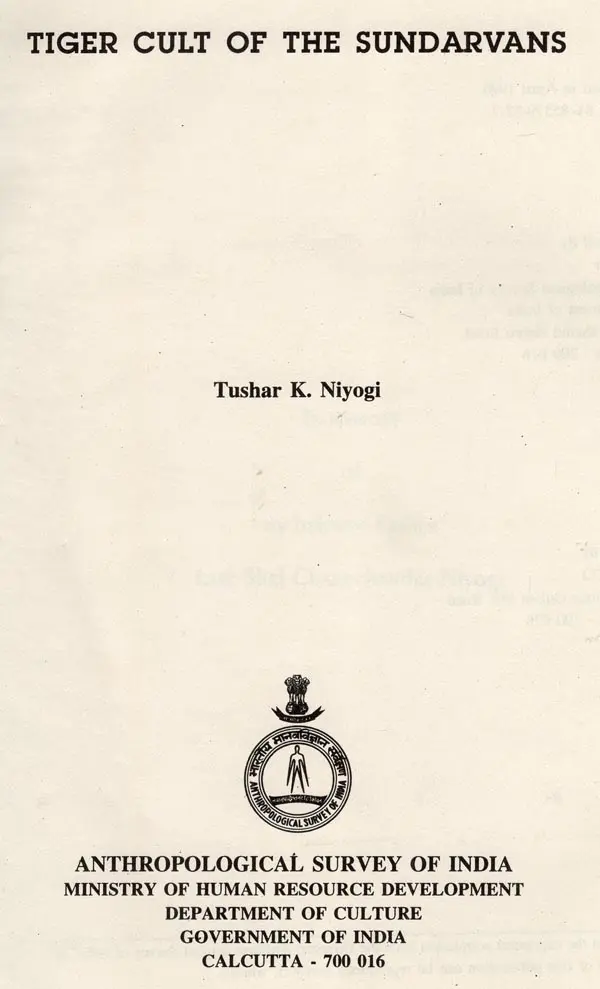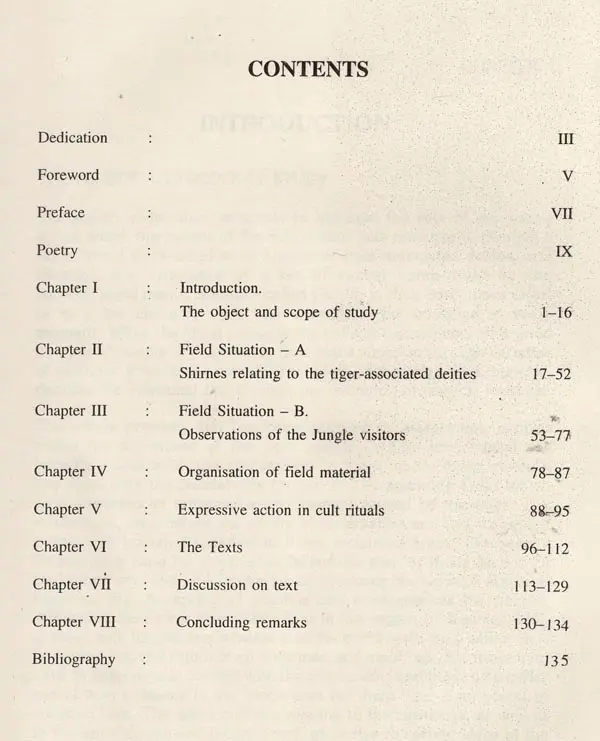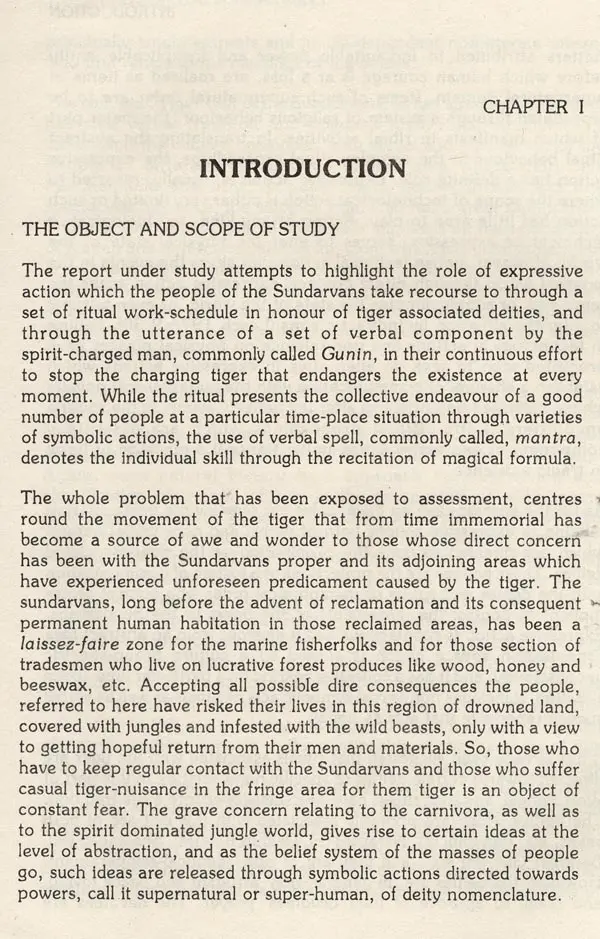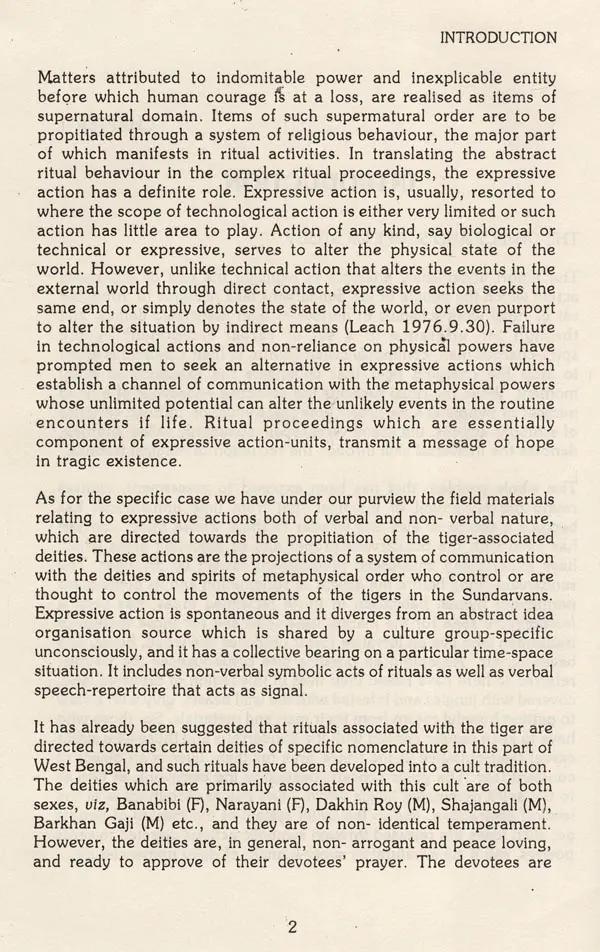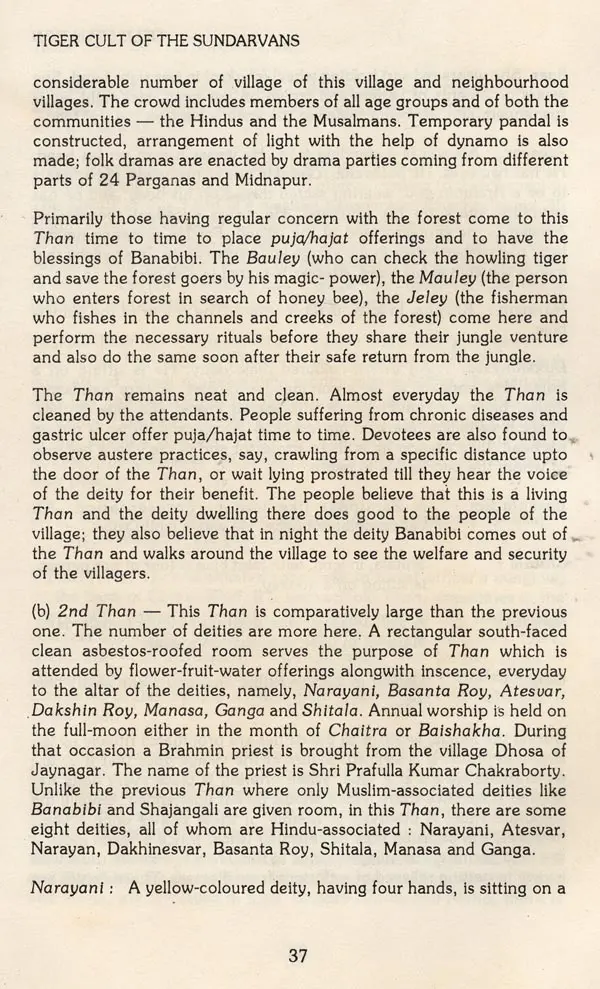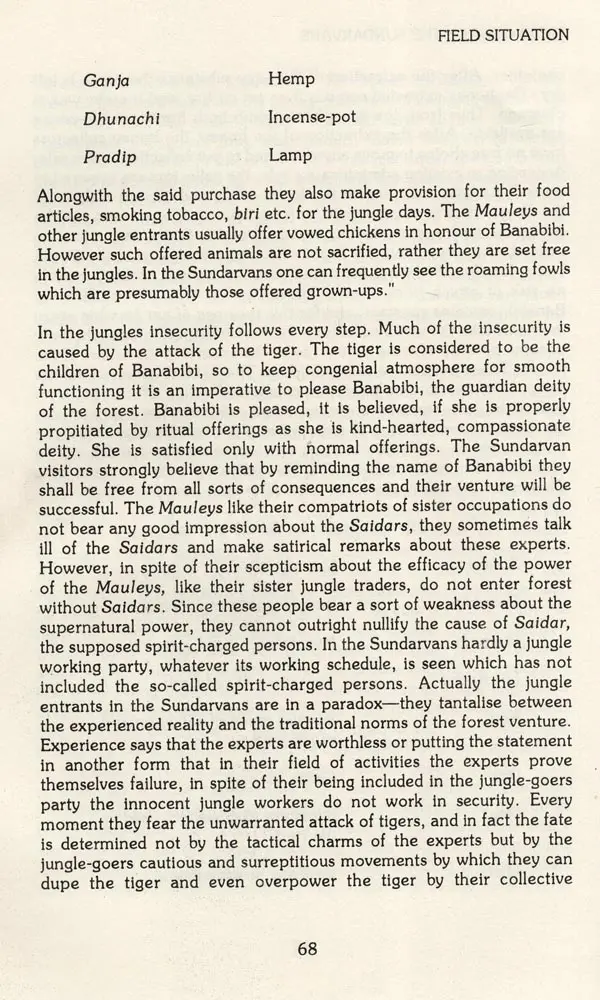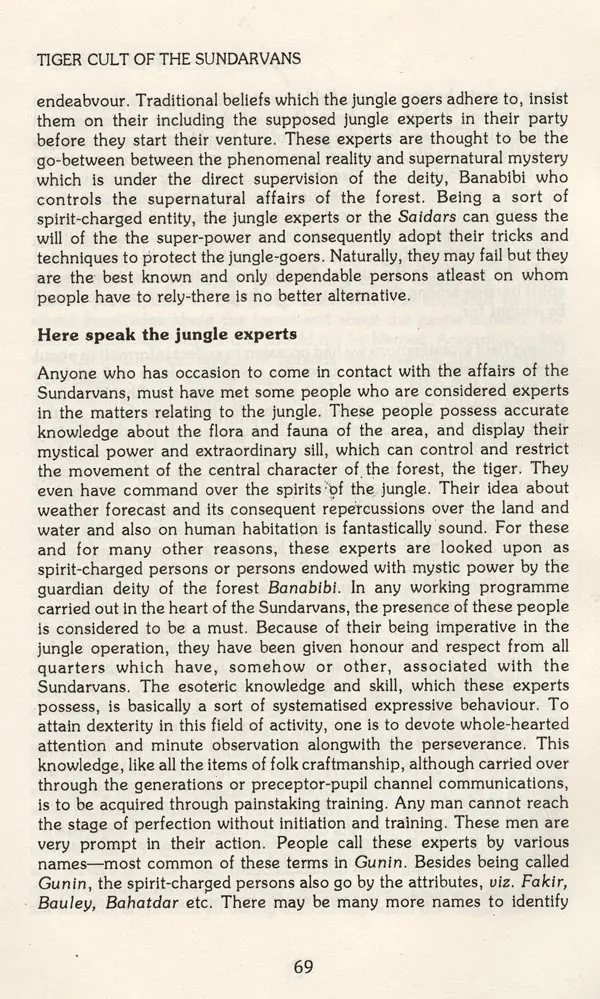About the Book The present treatise highlights the findings of a fieldwork on tiger cult undertaken by the author, in two phases, in the Sundarvans that lies within the limits of the moribund Gangetic delta in West Bengal. As a sequel to the author's erstwhile publication, Aspects of Folk Cults in South Bengal, this book makes a thorough study of a living cult that reveals the decade long probing of the author in the man: nature: supernature complex in which Tiger stands unequivocally the central figure of attraction. While presenting an excellent collection of data this book shows how the message of metaphysical power is transmitted through symbol-based rituals in the body of worldly systems and how the role of expressive action that gets channelised through the network of a queerly ordered verbal-repertoire, ensures the survival of the staggering moves of the people who roam in the Sundarvans for their subsistence.
This besides, the book also deserves attention of those who value the literary cliche of cult tradition. Two representative versions of the cult-worship viz., Roymangal and Banabibir Jahurnama, have very nicely shown how they voiced the consequence of political change in the region where Dakshin Roy had to share his power with Muslim protagonists Banabibi. These narrative poems have displayed much of socio-historical facts that will help the future researches to construct the cultural history of lower rural Bengal of late medieval age.
About the Author Dr. Tushar K. Niyogi (B. 1940) is Research Associate (Folklore) in Anthropological Survey of India, Calcutta. He did M.A in Modern Indian Language (Bengali) in 1963, Diploma in Chinese in 1968 and Ph.D. on Folk elements in Medieval Bengali Religious Literature (Mangalkaryas) in 1973 from the Calcutta University. He has been associated with An.S.I. since 1964. He had extensive field exposure in Tripura, in East Nimar district of M.P., and in West Bengal especially in deltaic district of lower Bengal.
His field of study includes aesthetic dimension of tribal and folkculture; expressive behaviour in cult rituals; folk therapeutics; animal lores; universalisation of minor deities; sacred fairs; oral tradition and religious shamanism and mother goddess cult.
Publications: Kerala ebang Andaman-Nicobarer Adibasi (1977); Folktales and Myths of Riang and Tripuri Communities (1983); Aspects of Folkcults in South Bengal (1987). Some of his other papers: Universalisation of a local deity, Panchenanda a case study; Rethinking folkore in the light of anthropological methodology; Folksociety and Folksongs of Bengal; A study of Tripuri proverbs; Glossary of Technical terms in social anthropology (Bengali); Emergence of Shani in the perspective of Culture contact.
Sacred bath ceremony at Gangasagar, Tiger cult of the Sundarvans, Faith Healing, Glimpses of Karku Culture etc. are awaiting in Press.
Foreword The Anthropological Survey of India opened a separate section in its Head Office, Calcutta in 1972 for the study of folklore. It was a small section comprising of a couple of devoted scholars. Though it did not grow in its size in the last twenty-two years, it has made a considerable contribution in the study of folkore. There are quite a few publications both in Hindi and English by the scholars of this section.
Preface The Sundarvans and its adjoining area in the district of 24 Parganas, West Bengal, have rich cult tradition relating to minor deities. Deities which play dominant role in moulding the behaviour and activities of the people who risk their lives in the Sundarvans, are in some way or other, associated with the tiger. Such deities of different nomenclature, e.g., Banabibi, Narayani, Dakshin Roy, Shajangali, Barkhan Gaji etc., are the protagonists of the cult which may be termed as Tiger-cult. Of these deities Banabibi appears to be the deity of supreme importance whose influence is very much felt even today in the Sundarvans and in the areas lie in its vicinity. Banabibi, as the nonliterate folks believe, controls the movement of the tiger thus ensuring security for the people and help them in acquisition of jungle produce, so vital for their sustenance. Dakshin Roy is considered another influential deity with respect to tiger. However, at present he manifests his power in redeeming various discomforts and diseases of his devotees. Other deities appear to be of minor significance since their place and role have been overshadowed by the astounding popularity of Banabibi. Such an empirical situation in relation to the tiger-associated deities has led the observer to consider Banabibi as the central deity of the cult. In this book the role of the deity of deities has been high-lighted, and an attempt has been made to identity her status in the traditional myth-ritual complex as well as in the current socio-economic activities in the Sundarvans. The author had the field exposure in the Sundarvans proper and in its vicinity for four months in two phases in 1980 and 1982. The investigation was undertaken while the author had been working on a project, "Tiger Cult of the Sundarvans,' under the auspices of the Anthropological Survey of India. As a member of the Folklore Section of the Survey, the author has focussed on the folklore elements like myths, beliefs, ritual practices etc. current among the monliterate village folks of various occupations.
Book's Contents and Sample Pages
